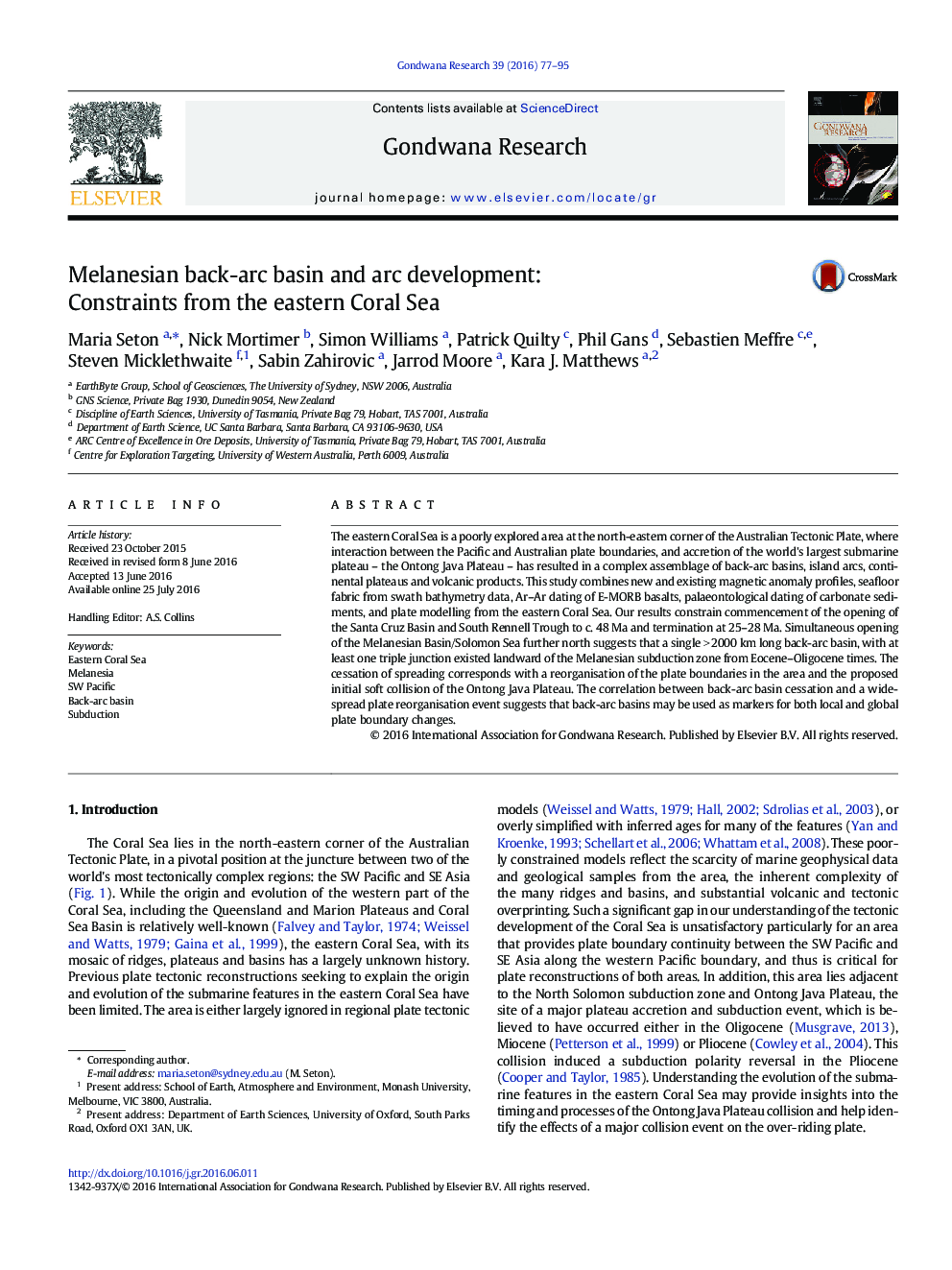| Article ID | Journal | Published Year | Pages | File Type |
|---|---|---|---|---|
| 4726563 | Gondwana Research | 2016 | 19 Pages |
•New magnetic, bathymetry and Ar–Ar dating from recent voyage to eastern Coral Sea•Opening of Santa Cruz Basin and South Rennell Trough constrained between 48 and 25 Ma•Single > 2000 km long Eocene–Oligocene back-arc basin existed landward of Melanesia.
The eastern Coral Sea is a poorly explored area at the north-eastern corner of the Australian Tectonic Plate, where interaction between the Pacific and Australian plate boundaries, and accretion of the world's largest submarine plateau – the Ontong Java Plateau – has resulted in a complex assemblage of back-arc basins, island arcs, continental plateaus and volcanic products. This study combines new and existing magnetic anomaly profiles, seafloor fabric from swath bathymetry data, Ar–Ar dating of E-MORB basalts, palaeontological dating of carbonate sediments, and plate modelling from the eastern Coral Sea. Our results constrain commencement of the opening of the Santa Cruz Basin and South Rennell Trough to c. 48 Ma and termination at 25–28 Ma. Simultaneous opening of the Melanesian Basin/Solomon Sea further north suggests that a single > 2000 km long back-arc basin, with at least one triple junction existed landward of the Melanesian subduction zone from Eocene–Oligocene times. The cessation of spreading corresponds with a reorganisation of the plate boundaries in the area and the proposed initial soft collision of the Ontong Java Plateau. The correlation between back-arc basin cessation and a widespread plate reorganisation event suggests that back-arc basins may be used as markers for both local and global plate boundary changes.
Graphical abstractFigure optionsDownload full-size imageDownload as PowerPoint slide
